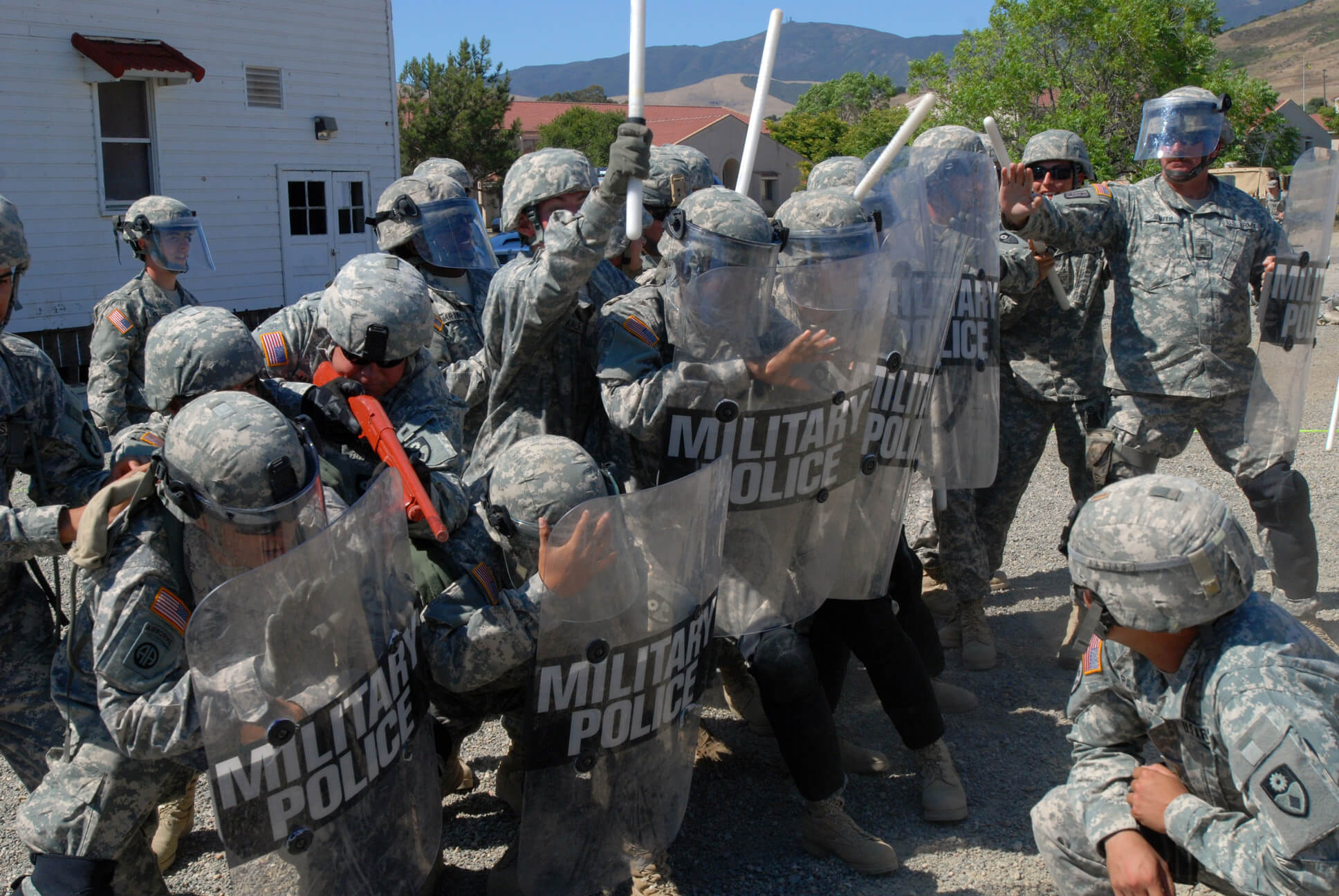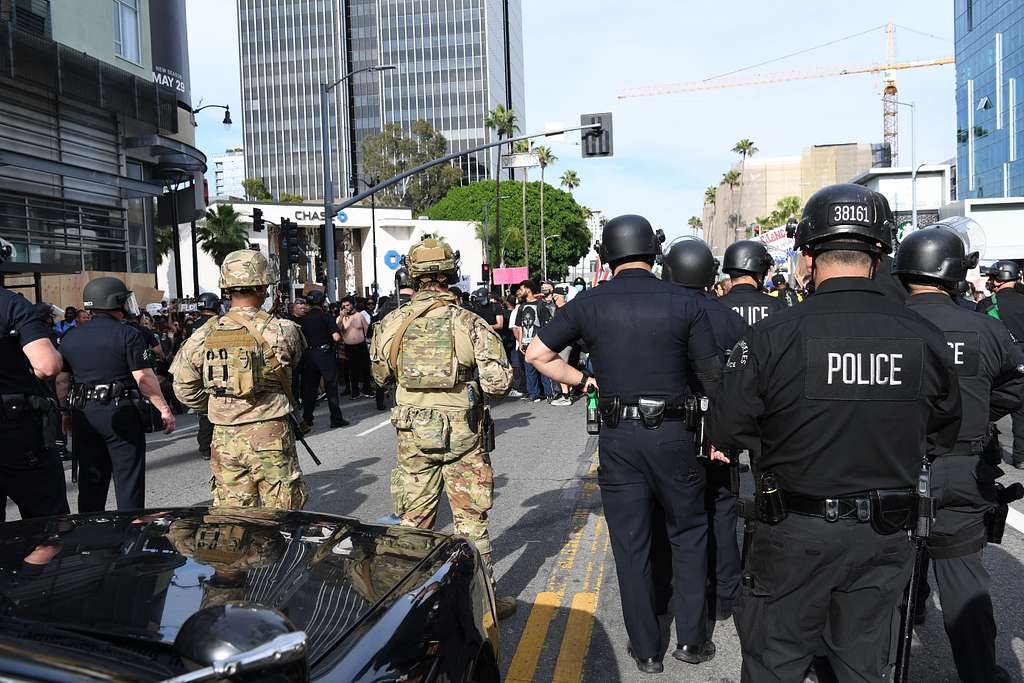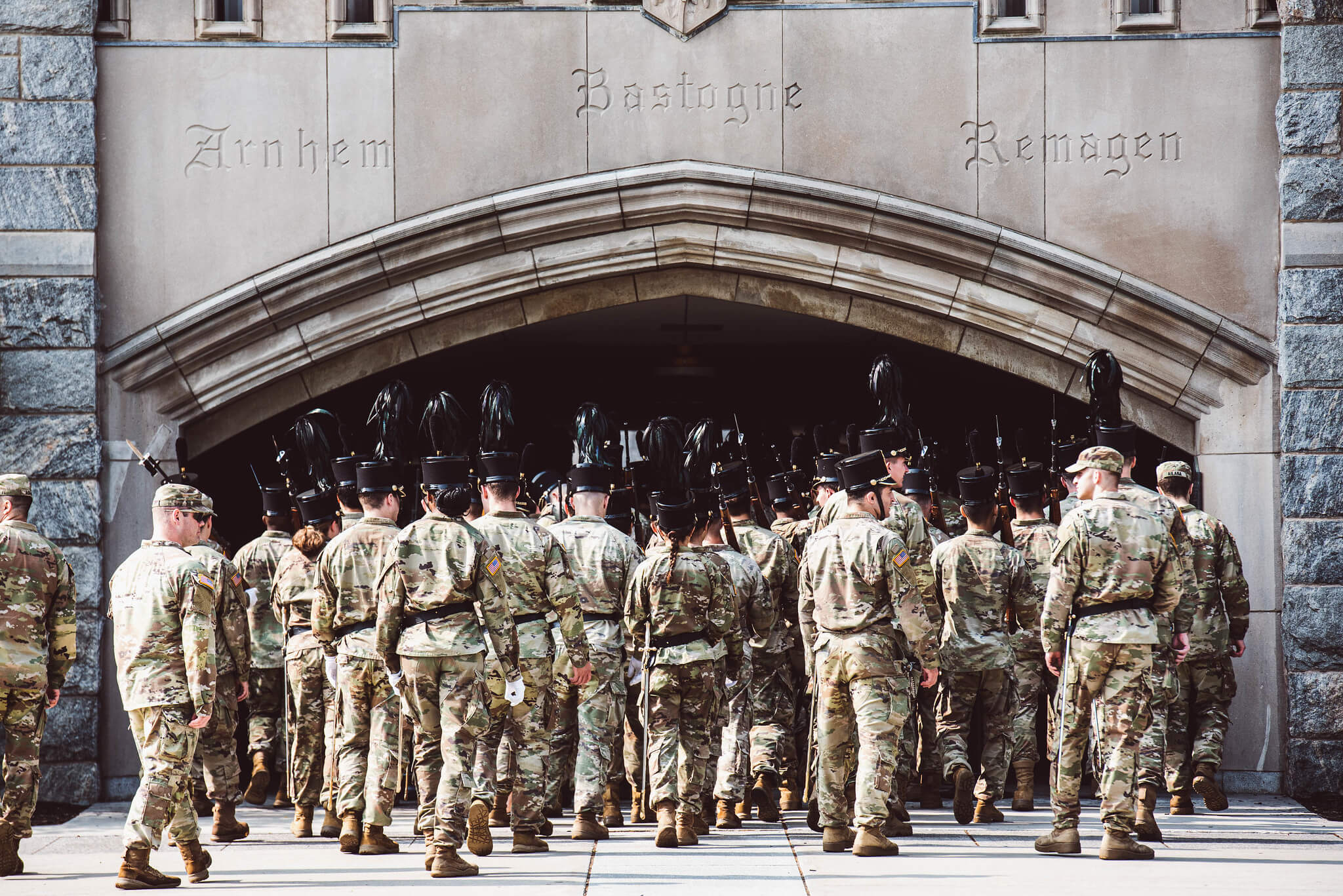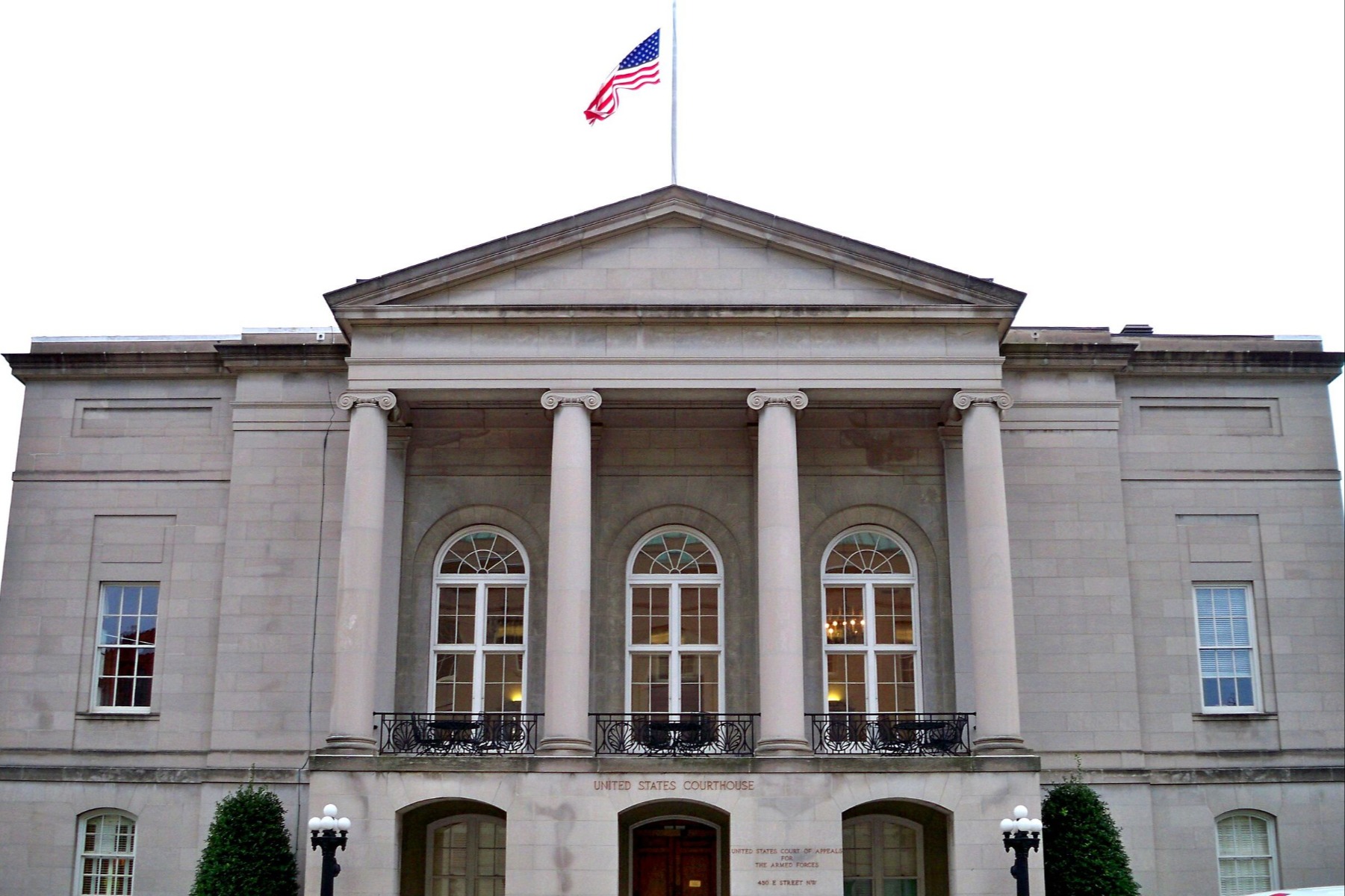The Governor’s Role in Federalizing the National Guard Under 10 U.S.C. § 12406

Published by The Lawfare Institute
in Cooperation With

On Monday evening, California sued President Donald Trump and Secretary Pete Hegseth to enjoin implementation of the president’s memorandum federalizing “at least 2,000 National Guard personnel” under 10 U.S.C. § 12406 to undertake a federal protective mission. There are two central issues raised in the brief. First, whether the Pentagon complied with procedural requirements regarding how orders under § 12406 are issued. Second, whether the prerequisites for relying upon § 12406 are met.
California is correct that there must be some role for the state in issuing federal orders under § 12406. And it is certainly correct that, on Saturday, when the authority was invoked, there was not plausibly a rebellion in Los Angeles, under any reasonable interpretation of the term. But the state likely overstates the governor’s legally required role in this process. And it remains unclear whether courts will have the appetite to adjudicate the substantive meaning of “rebellion” under the act.
To understand the briefing, it’s important to distinguish between the three types of authorities governing National Guard deployments. First is the substantive authority (statutory or constitutional) to perform any given federal mission. As I discussed in Lawfare over the weekend, in the case of the National Guard deployment to Los Angeles, that is Article II of the Constitution (under a theory of executive power known as the protective power).
Second is the fiscal authority to fund the mission (provided in appropriations acts made available by Congress on an annual basis). Congress’s ability to control Defense Department appropriations is one of the most potent weapons it has in limiting domestic uses of the military (particularly when those domestic deployments use members of the National Guard).
Third is the legal authority under which an individual is put on military orders. Statutory law, 10 U.S.C. § 12401, provides that “Members of the Army National Guard of the United States and the Air National Guard of the United States are not in active Federal service except when ordered thereto under law” (emphasis added). This means that there must be some legal authority for the president to put a given member of the National Guard into federal service.
There are a variety of statutory authorities under which Congress has authorized the president and other executive branch officials to bring the National Guard (and members of the reserve components, like the Navy Reserve) into federal service. Provided in Chapter 1209 and 1211 of Title 10, they are often quite specific: authorizing mobilization to respond to a request for assistance from the Federal Emergency Management Agency under the Stafford Act or responding to a weapons of mass destruction attack, to take just two examples.
This brings us to 10 U.S.C. § 12406, a mobilization authority provided in Chapter 1211 of Title 10. Recall that this statute authorizes the president to call members of the National Guard into federal service in three circumstances:
- Actual or threatened foreign invasion.
- Actual or threatened rebellion “against the authority of the Government of the United States[.]”
- When the President is unable with the regular forces to execute the laws of the United States.
Furthermore, it provides that these orders to federal duty “shall be issued through the governors of the States, or, in the case of the District of Columbia, through the commanding general of the National Guard of the District of Columbia.” It is this portion of the text that California puts at the center of its suit. The state argues that Secretary Hegseth “unlawfully bypassed the Governor of California” by sending a memorandum to the adjutant general of California and “called into federal service 2,000 members of the California National Guard.”
As the brief rightly notes, this text has some substantive meaning, especially since Congress specifically added this text to a preexisting National Guard mobilization statute. The predecessor to § 12406 was enacted in 1903 as part of a comprehensive overhaul of the organization of the state and territorial militias. As originally enacted in Pub. L. 60-33 § 4, the statute provided:
That whenever the United States is invaded, or in danger of invasion from any foreign nation, or of rebellion against the authority of the government of the United States, or the President is unable, with the other forces at his command, to execute the laws of the Union in any part thereof, it shall be lawful for the President to call forth, for a period not exceeding nine months, such number of the militia of the State or of the States or Territories or of the District of Columbia as he may deem necessary to repel such invasion, suppress such rebellion, or to enable him to execute such laws, and to issue his orders for that purpose to such officers of the militia as he may think proper.
There are at least two noteworthy observations to make here. First, this mobilization authority is entirely separate from the provisions of the Insurrection Act, which were unaffected by this statute. Second, this statute mentions no role for the governor of a state or territory.
This requirement would only be added in a 1908 revision to the 1903 statute. The 1908 revision did two things. First, it removed the nine-month limitation in the 1903 statute. Second, it added that orders under the statute be issued “through the governor of the respective State or Territory, or through the commanding general of the militia of the District of Columbia.”
I can find nowhere in the legislative record an explanation for this addition to the text. The original Senate version of the 1908 bill only removed the nine-month limitation. A subsequent report from the Senate Committee on Military Affairs notes the insertion of the governors into this mobilization authority, again without explanation.
This leaves little more than the text for interpretation. California appears to allege that the text requires that the governor personally review and issue these orders to federal duty. This would provide the governor with the opportunity to provide what California believes to be minimally required under the act—“consultation with the President or federal officials not only as to whether the California National Guard should be called into federal service at all, but if so, which service members and in what number should be called, and for what purposes and what period of time.”
This is a strong interpretation of what “issues” means in this context. Merriam-Webster defines “issue,” when used as a verb, as “to put forth or distribute usually officially,” or, alternatively, “to send out for sale or circulation.” This suggests a more ministerial, rather than substantive, involvement with the federal orders issued by the president.
While California is entirely correct that the governor is the commander in chief of the state’s militia, it’s not at all clear that any orders, in the usual course, must pass over the governor’s desk as a matter of law. Article 3.163 of the California State Code, for example, provides that the adjutant general (the commanding general of the California National Guard) “shall issue all orders in the name of the Governor.” This statutory delegation is a baseline—I would expect many more delegations in California Military Department regulations, as there frequently are at the federal level. DoD Instruction 1235.12, “Accessing the Reserve Components,” for example, provides a laundry list of such delegations.
There is also little historical precedent to support California’s robust understanding of the consultation required with the governor. The brief asserts that there has been one prior invocation of § 12406—regarding President Richard Nixon’s use of the National Guard during a postal worker strike. There is one additional invocation of this authority, documented in a 2012 study by Paul Scheips of the U.S. Army Center for Military History. Scheips notes that President Dwight D. Eisenhower relied on the predecessor to § 12406 to place the Arkansas National Guard on federal orders to integrate schools. This, of course, was a mission undertaken pursuant to the Insurrection Act done explicitly against the wishes of the Arkansas governor.
There is much more to commend California’s argument that the facts on the ground on Saturday don’t plausibly constitute a rebellion against the United States. While there have certainly been instances of violence, in some cases quite serious, it is far from the “open, armed … defiance of or resistance to an established government” which Merriam-Webster believes constitutes a rebellion. This does not guarantee, of course, that judges will decide that it is proper for the courts to intervene in the executive’s determination of what constitutes a rebellion. In this way, the same set of questions about deference and the political question doctrine are playing out both here and in the Alien Enemy Act cases. How appellate courts, and ultimately the Supreme Court, address those cases will be a bellwether for judicial treatment of California’s claims regarding § 12406.
That is, of course, unless the case is mooted because the Pentagon decides to abandon using the National Guard for military personnel already on federal orders, as is true for the 700 Marines who were deployed to Los Angeles on Monday night.
Editor's Note: A prior version of this article incorrectly asserted that President Nixon did not invoke § 12406 to respond to the postal worker strike. This error has been corrected.





